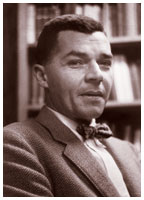
|
April 23, 2008: From the Editor
Michael Pratt |
David Carpenter ’08, the young violist profiled in our cover article, is unique among Princeton orchestral musicians for attempting to carve out a career as a soloist. But he is just one example of the gifted classical musicians who bring their years of practice to Princeton. Michael Pratt has been conducting the University Orchestra for the last 30 years and says that there has been steadily increasing interest in Princeton and the orchestra from top music students. “The Class of 2011 is very strong, and I can say that the applicant pool for the Class of 2012 is much deeper than it ever has been,” Pratt observes. The talent, he says, is “astonishing.”
Competition for an orchestra seat can be intense: Between 150 and 175 musicians audition for the 95 or 100 spots. So many talented students were being turned down that years ago, Pratt started a second orchestra — the Sinfonia — so that these students, too, could have a chance to perform.
Only a minority of the students in these orchestras graduate into jobs in music — like chemistry major Jonathan Vinocour ’01, principal violist in the St. Louis Symphony; music major Seth Baer ’02, who plays bassoon with the Pennsylvania Ballet and other groups; and Near Eastern studies major Nikki Federman ’07, principal violist in the top orchestra at the Manhattan School of Music.
Robert F. Goheen ’40 *48 in 1956, after being named Princeton’s 16th president. (Elizabeth Menzies, Princeton Alumni Weekly photograph collection, Princeton University Archives) |
If you want to hear the orchestra perform, its last concerts this academic year take place April 25 and 26. On the program is Mahler’s Ninth Symphony — probably, Pratt says, “the most difficult symphony in the repertory.” You also can hear the orchestra play outdoors at Reunions, when it is scheduled to precede the traditional fireworks display — with musical fireworks of its own.
With sadness, PAW reports on the death of President Robert F. Goheen ’40 *48 (page 8), who in many ways built the Princeton that we know today.
In the fall of 2006, Princeton marked 70 years since Goheen arrived on campus as a freshman. At the time, PAW contributor Merrell Noden ’78 spoke at length with the former president, who seemed frail but mentally sharp. Noden’s story (Nov. 8, 2006) recounted the life of the man who had so changed Princeton: making a smooth transition to coeducation (at first he had opposed it), diversifying the student body, overseeing construction that nearly doubled the size of the campus, strengthening the faculty, and guiding Princeton through an era that tore many universities apart. After the interview, Noden commented upon Goheen’s great humility, which was striking in a man who had accomplished so much.
Goheen’s death came shortly before this issue was to go to press,
and we were unable to include more than a short report. We will have more
coverage in our May issue. Please send stories about your own encounters
with Goheen and your memories of him to PAW at paw@princeton.edu
or 194 Nassau Street, Suite 38, Princeton, NJ, 08542. ![]()
![]()
Marilyn H. Marks *86
mmarks@princeton.edu


